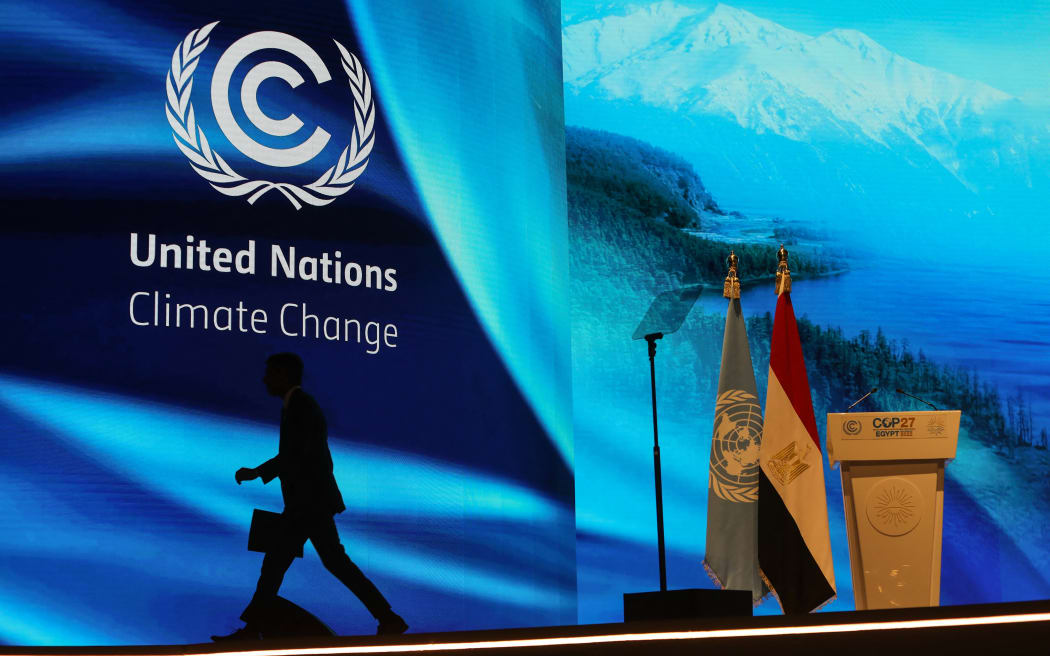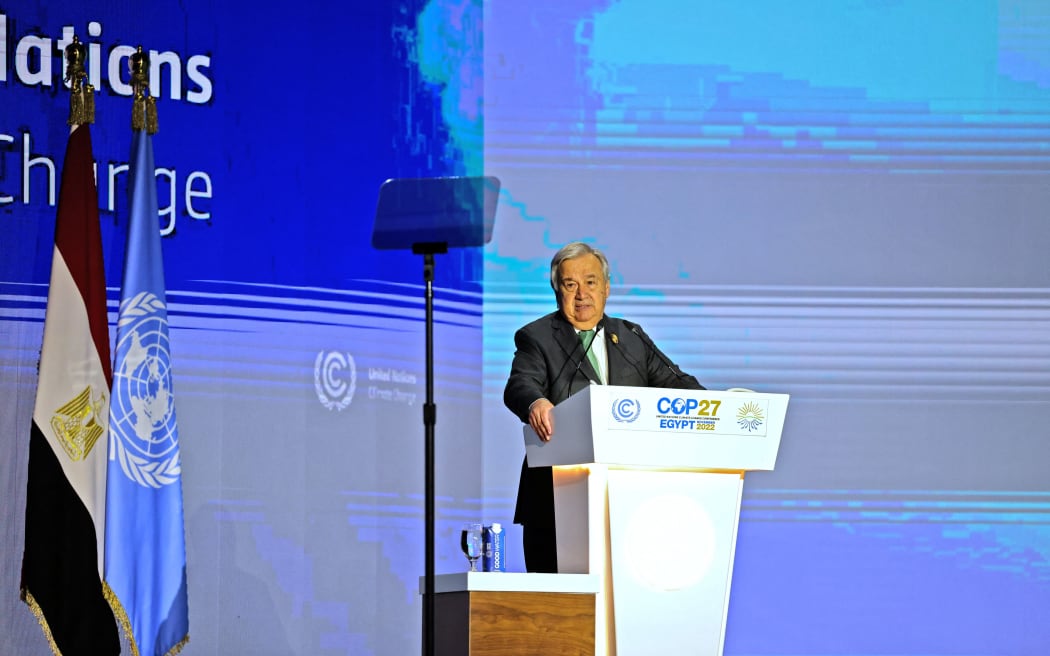 Photo: MOHAMED ABDEL HAMID/AFP
Photo: MOHAMED ABDEL HAMID/AFP
World leaders have gathered in Egypt to bring to the forefront global climate-related issues at the UN climate summit in Egypt.
The two-week 27th United Nations Conference of Parties, or COP27, will host discussions for commitments by governments to tackle climate change.
The Pacific Islands Forum has declared a climate emergency and demand real action from world leaders.
Here’s everything you need to know about COP27.
How did the COP meetings begin?
In 1995, the United Nations got parties (countries) together to address the rising climate-related issues, particularly the warming of the planet due to human activities, mainly from burning fossil fuels such as oil, gas and coal.
According to the Intergovernmental Panel on Climate Change (IPCC), global temperatures have risen 1.1C and are heading towards 1.5C. If temperatures rise 1.7 to 1.8C above 1850s levels, the IPCC estimates that half the world’s population could be exposed to life-threatening heat and humidity.
To address these issues, in 2015, something momentous happened when every country agreed to work together to limit global warming to well below 2C and aim for 1.5C, to adapt to the impacts of a changing climate and to make money available to deliver on these aims.
This saw climate change go from being a fringe issue to a global priority.
Why are the COP talks important?
The World Meteorological Organization said change was happening at catastrophic speed. The last eight years have been the warmest on record, making every heatwave more intense and life-threatening, especially for vulnerable populations.
United Nations Secretary-General António Guterres, during the opening of the event, said the planet was sending a distress signal and that the latest State of the Global Climate report was a chronicle of climate chaos.
“Sea levels are rising at twice the speed of the 1990s – posing an existential threat for low-lying island states and threatening billions of people in coastal regions. Glacier melt records are themselves melting away – jeopardising water security for whole continents.”
Guterres summed up the purpose of this summit.
“People and communities everywhere must be protected from the immediate and ever-growing risks of the climate emergency. That is why we are pushing so hard for universal early warning systems within five years. We must answer the planet’s distress signal with action, ambitious, credible climate action. COP27 must be the place – and now must be the time.”
What are the Pacific leaders lobbying for at COP27?
This year, the 14 Pacific Island countries (PICs) will attend the conference to raise their voices and advocate for the “1.5 to stay alive” target.
Pacific leaders will also be pressing developed nations for compensation for the emissions caused by richer nations over hundreds of years and its consequence on developing states’ economies.
Pacific Community (SPC) Climate Change and Environmental Sustainability Programme, Espen Ronneberg, said climate financing was a crucial item.
“Loss and damage has long been a Pacific concern, as we realise that the international community is not taking sufficiently ambitious mitigation action and that adaptation financing is not flowing at the rates commensurate with the problem. If the situation is not remedied, then the Pacific will inevitably face loss and damage issues, and this is likely to be one of the main challenges to be raised at COP27.
“Hence, this year, countries will defend the motto ‘1.5 to stay alive’, a way to promote the need to keep global warming below 1.5C if we want to secure our resources and blue planet,” Ronneberg said.
Apart from financing, for the first time this year, COP will host a Food Systems Pavilion to address the challenge of food sustainability.
Director of the Pacific Community’s Land Resources Division Karen Mapusua said transforming our food systems was one of the most impactful things we could do for our climate and environment.
“This challenge is particularly important for the Blue Pacific region as it is estimated that between 50 and 70 per cent of Pacific people depend on agriculture, fishing, and associated activities for their livelihoods. Pacific food systems heavily rely upon a perfect symbiosis between communities, the land on which they live and the vast ocean surrounding them.”
What will be discussed at COP27?
It was expected that the role of climate finance, adaptation ambition, and implementation would be central to discussions, along with tackling what negotiators call “loss and damage”, will be leading the discussions.
The United Nations Environment Programme (UNEP) reports that parties were also expected to review progress to channel US$100 billion a year to developing countries grappling with the climate crisis. This pledge was made in 2009 at COP15 in Copenhagen. They will also discuss a post-2025 finance goal.
Several bilateral and private sector agreements are also expected to be announced to enhance the implementation of climate action and shift climate finance into trillions.
A new report from the UNEP found that the world will need more than US$300 billion per year by 2030 to deal with the effects of the climate crisis, which included droughts, rising seas and more severe storms. Adapting to the climate crisis would be a heavy burden for developing countries.
The Global Goals on Adaptation were established under the Paris Agreement to build adaptive capacity, strengthen resilience, and reduce vulnerability to the climate crisis so that the most vulnerable communities worldwide can adapt.
It was expected that parties would discuss this goal in Egypt and the need to increase climate finance towards adaptation outcomes and enhanced resilience.
 United Nations Secretary General Antonio Guterres delivers a speech at the COP27 leaders summit. Photo: AFP
United Nations Secretary General Antonio Guterres delivers a speech at the COP27 leaders summit. Photo: AFP